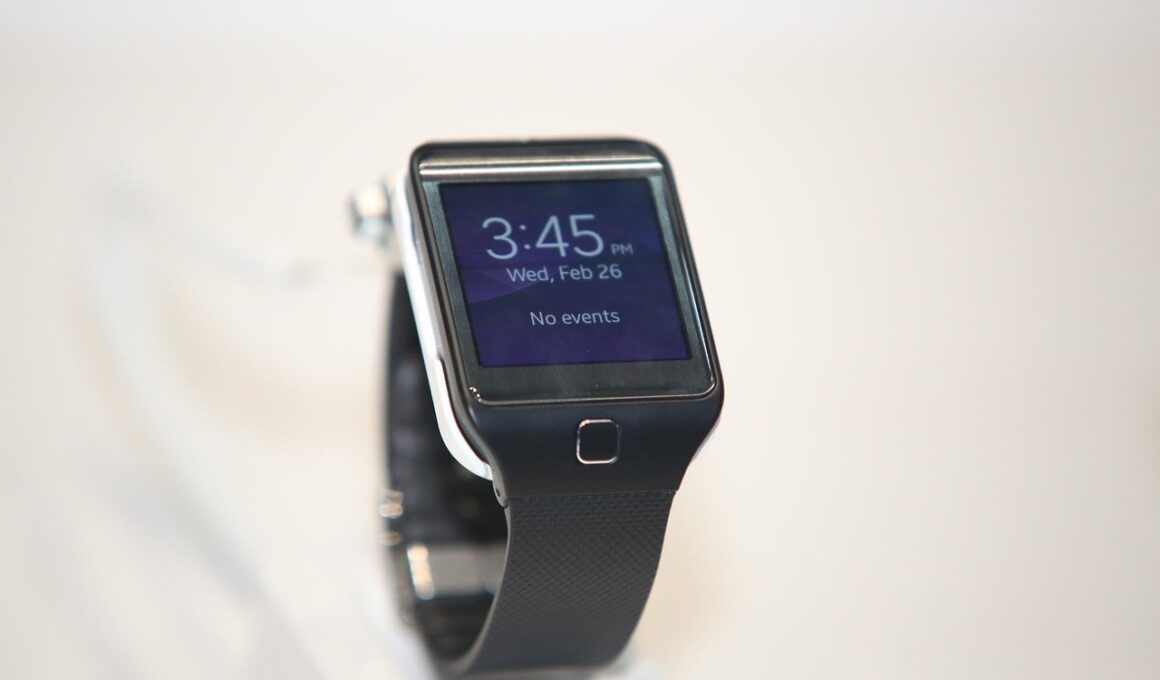Adaptive Fitness and IoT: Connected Solutions for Wellness
In today’s digital age, the intersection of adaptive fitness and technology is revolutionizing wellness for individuals with disabilities. The Internet of Things (IoT) offers personalized solutions that enhance physical activities tailored to specific needs. IoT devices like wearable fitness trackers, smart clothing, and adapted gym equipment create a supportive environment. They gather real-time data, analyzing metrics such as heart rate and activity levels. This information can also provide feedback geared towards improving performance and preventing injuries. These technologies empower users, encouraging them to engage in fitness regimens that cater to their unique abilities. Additionally, IoT devices help create a community, allowing sharing of progress and experiences with peers. Artificial Intelligence (AI) integrated into these devices often adapts plans based on progress, making suggestions for routines and recovery times. Ultimately, the combination of IoT and fitness training enhances accessibility for those with disabilities. The goal remains to ensure everyone can enjoy the benefits of physical fitness, leading to improved health outcomes, increased self-esteem, and a sense of belonging. Embracing these technologies signifies a crucial step towards inclusivity in the fitness world.
The Role of Wearable Technology
Wearable technology plays a pivotal role in adaptive fitness. Devices such as smartwatches and fitness bands capture vital health metrics over time, giving invaluable insights to users. Individuals with disabilities can monitor their exertion levels, heart rate, and even sleep patterns, promoting a healthier lifestyle. The designs of these wearables cater specifically to diverse functions and disabilities, enhancing usability and comfort. By providing real-time feedback, users gain the ability to make informed decisions about their activities. Moreover, many wearable devices can sync with mobile applications, allowing for a more comprehensive view of health data. Users can set achievable goals, track progress, and receive motivational reminders. Many brands also integrate social features, enabling users to connect with friends, promoting accountability. When individuals share their journeys, it fosters a supportive community, empowering them to maintain healthy habits together. Ultimately, using wearable technology is about encouraging physical activity without barriers, ensuring that everyone, regardless of ability, can engage in meaningful fitness experiences. As improvements and innovations in this technology continue, the impact on adaptive fitness will likely grow, supporting personal wellness like never before.
Smart home technology significantly enhances adaptive fitness, offering automated solutions to help those with disabilities lead healthier lives. Smart devices, such as voice-controlled assistants and smart appliances, allow users to customize their environment to better suit their fitness routines. These technologies can simplify tasks such as setting timers for workouts or tracking nutrition. Integrating smart devices with IoT allows users to experience seamless transitions in their fitness activities. For instance, some smart home setups can adjust lighting based on the activity, providing an ideal atmosphere for workout sessions. Additionally, smart televisions and streaming services now offer fitness classes designed for various abilities, accessible from the comfort of one’s home. This promotes Active Living while ensuring safety. Furthermore, smart monitoring offers peace of mind to family members, allowing them to stay updated on their loved ones’ activities. With a modular approach to smart technology, homes can be tailored to fit the varying physical needs of individuals. Overall, the fusion of smart home technology into fitness regimens provides a supportive network that champions wellness and navigates disabilities effectively.
Adaptive Fitness Apps and Their Benefits
In the realm of adaptive fitness, mobile applications are revolutionizing how individuals find motivation and connect with resources. These tailored apps provide users with customized workout plans and dietary suggestions based on their individual needs. They often include features that accommodate various abilities, ensuring inclusivity in fitness pursuits. Many applications focus on community support by providing forums for users to share insights and experiences. This communal aspect fosters encouragement and accountability among peers, making fitness a shared journey rather than a solitary endeavor. Furthermore, adaptive fitness apps track progress over time, allowing users to visualize their improvements and set new goals. Some applications also incorporate gamification elements, making workouts engaging through challenges and rewards. Such creativity not only motivates users but also enhances mental well-being. Additionally, many of these apps link directly with wearable devices for more accurate data tracking. Real-time feedback helps users modify their routines, ensuring they remain engaged in their wellness journey. In essence, adaptive fitness apps create an ecosystem that supports ongoing growth and achievement, promoting both physical and emotional health for individuals with disabilities.
Integrating IoT in fitness equipment is a game-changing advancement for those with disabilities. Companies increasingly design adaptive machines that automatically adjust features based on user preferences and performance data. For instance, smart treadmills can change incline and speed based on the potential of the user, making workouts less strenuous yet effective. These innovations also create a more inclusive gym environment, appealing to individuals of various abilities. Sensors embedded into fitness equipment collect vital data, offering real-time feedback during workouts. This not only aids in performance improvement but also boosts user safety. Gym spaces equipped with IoT technology can help track user attendance and engagement, allowing gyms to tailor their offerings to better meet community needs. Remote programming options enable trainers to create individual workouts for users, ensuring every session is personalized. Additionally, collaborative efforts between developers and physical therapists reinforce the effectiveness of utilizing technology for personalized training. Smart fitness equipment ultimately breaks down barriers, allowing everyone to engage in physical activities that promote health and wellness, regardless of their abilities.
Future Innovations in Adaptive Fitness Technology
The future of adaptive fitness technology is bright, with innovations continually reshaping the landscape. Emerging technologies such as augmented reality (AR) and virtual reality (VR) stand to transform physical training. With AR, users can visually track their workouts or join immersive fitness classes that provide engaging environments. VR can create worlds where users feel more connected and motivated to exercise, overcoming physical constraints through simulated activities. Moreover, advancements in artificial intelligence will lead to even more personalized fitness plans based on individual progress and preferences. Machine learning can analyze trends, helping users optimize their routines and improve results. Furthermore, breakthroughs in robotics may produce specialized exercise machines or companionship robots that guide individuals through workouts, ensuring safety and compliance. The possibilities are vast, and as technology advances, increased accessibility will likely become the norm. As fitness professionals and tech developers collaborate, there is great potential to design customized applications that support diverse needs. Ultimately, these emerging technologies hold the promise of making fitness more engaging, accessible, and enjoyable for individuals with disabilities, enabling them all to lead healthier lives.
The importance of developing collaborative partnerships in adaptive fitness cannot be overstated. Businesses, healthcare providers, and technology developers must join forces to create better tools and resources. By working together, they can focus on bridging gaps and ensuring that adaptive fitness solutions cater to the diverse community’s needs. Gathering user feedback throughout the development process is crucial; it allows for improvements based on actual user experiences. Engaging with individuals with disabilities can ensure products are designed with usability and accessibility in mind. Additionally, these partnerships can lead to increased awareness about adaptive fitness programs and encourage more pervasive adoption throughout communities. Events such as fitness expos and conventions can facilitate networking opportunities among professionals, promoting dialogue and knowledge sharing. Collaborations can also extend to organizations that advocate for disability rights, ensuring that fitness becomes a fundamental aspect of overall wellness for everyone. Ultimately, by fostering a sense of community among stakeholders, adaptive fitness initiatives can thrive, encouraging proactive approaches to health and fitness that align with technological advancements and personal capabilities.
Conclusion: Embracing Adaptive Fitness Innovations
Embracing adaptive fitness innovations opens a world of wellness possibilities for individuals with disabilities. The marriage of technology with fitness enables creative solutions to physical activity challenges. Connected devices enhance user experiences, offering personalized and meaningful engagements that promote active lifestyles. Through the Internet of Things, adaptive technologies ensure everyone can access and participate in fitness programs. Innovations such as wearables, smart equipment, and specialized apps create supportive environments that encourage consistent participation. The future holds even more promise with ongoing developments in AI, AR, and VR technologies. As the fitness community continues evolving, there is an opportunity to further enhance inclusivity, ensuring every individual has the chance to improve their health and well-being. Not only do these innovations inspire a higher quality of life, but they also cultivate a sense of belonging and empowerment. Together, individuals and organizations can continue to dismantle stigma surrounding disabilities and promote active living as an achievable goal for all. Ultimately, the fusion of adaptive fitness and technology ushers in a new era of wellness, focusing on the strengths and capabilities of individuals as they pursue their unique fitness journeys.


